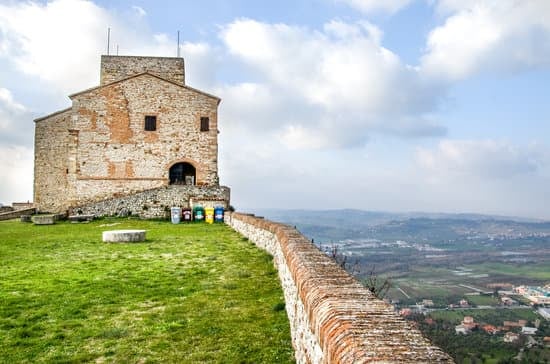Italy, a country renowned for its rich history, stunning landscapes, and delectable cuisine, has always been a dream destination for travelers. However, with the unprecedented global outbreak of COVID-19, the travel industry has come to a screeching halt. As we navigate through these challenging times, many are left wondering if it is possible to travel to Italy in May 2020.
In this article, we will delve into the current travel scenario in Italy and provide you with essential information to help you make an informed decision about your travel plans. We will explore the travel restrictions and regulations implemented by the Italian government, evaluate the safety and health factors of traveling to Italy in May 2020, and understand the impact of the COVID-19 situation on tourism in the country.
Additionally, we will provide guidelines for international travelers to prepare for their trip to Italy in May 2020. From understanding quarantine measures imposed by Italy for incoming travelers to exploring top destinations and finding safe lodging options, we aim to equip you with valuable insights and tips that will enhance your travel experience.
Stay tuned as we bring clarity to your burning questions regarding traveling to Italy in May 2020. Whether you are planning a once-in-a-lifetime vacation or visiting loved ones, let us guide you through this unprecedented time so that you can make the most of your trip while prioritizing your health and safety.
An Overview of Italy’s Travel Restrictions and Regulations in May 2020
Italy, like many other countries around the world, has implemented travel restrictions and regulations in response to the COVID-19 pandemic. These measures are aimed at containing the spread of the virus and ensuring the safety and well-being of both residents and visitors. If you are planning to travel to Italy in May 2020, it is important to be aware of these restrictions and regulations to avoid any inconveniences or complications during your trip.
- Entry Restrictions: As of May 2020, Italy has imposed entry restrictions for travelers coming from certain countries with high rates of COVID-19 infections. It is advisable to check the latest information from the Italian Ministry of Foreign Affairs or contact your local embassy or consulate for specific details about entry requirements based on your country of origin.
- Quarantine Measures: Italy has implemented a mandatory 14-day quarantine period for all incoming travelers, regardless of their country of origin. This means that upon arrival, you will be required to self-isolate in a designated residence or accommodation for two weeks. It is crucial to factor this into your travel plans and make arrangements accordingly.
- Transportation Restrictions: Italy’s transportation system has also been impacted by the pandemic. Flights may be limited or suspended from certain destinations, so it is important to check with airlines for updated flight schedules and availability. Additionally, public transportation services within Italy may have reduced schedules or capacity limits, so it is advisable to plan your travels accordingly and consider alternative options such as renting a car.
Overall, traveling to Italy in May 2020 involves navigating a complex web of travel restrictions and regulations due to COVID-19. It is essential to stay informed about the latest updates from official sources and follow all guidelines and protocols set by Italian authorities. By doing so, you can ensure a safe and smooth trip while making the most of your time in this beautiful country.
Evaluating the Safety and Health Factors of Traveling to Italy in May 2020
As the COVID-19 pandemic continues to affect travel plans around the world, it is crucial to evaluate the safety and health factors before considering a trip to Italy in May 2020. Italy has been one of the most affected countries by the virus, but it has also made significant efforts to control its spread and ensure the safety of its residents and visitors.
Before traveling to Italy in May 2020, it is important to stay updated on the current travel restrictions and regulations imposed by the Italian government. As of now, Italy has lifted some of its travel bans and restrictions, allowing tourists from certain countries to enter. However, these regulations are subject to change depending on the evolving situation of COVID-19.
To ensure your safety during your trip, it is crucial to follow guidelines provided by health authorities. This includes practicing good hygiene habits such as regular handwashing with soap and water or using hand sanitizers, wearing face masks when required or recommended, and maintaining social distancing whenever possible. It is also advisable to check for any specific requirements or recommendations issued by your home country’s embassy or consulate regarding travel to Italy.
Considering the current COVID-19 situation in Italy, it is important to assess the impact of the virus on tourism. Many attractions, museums, restaurants, and hotels may have limited capacities or operating hours due to social distancing measures. It is advisable to check in advance if reservations are required for popular tourist sites and make necessary arrangements.
Exploring the Current COVID-19 Situation in Italy and its Impact on Tourism
The COVID-19 pandemic has had a significant impact on the tourism industry worldwide, and Italy has been one of the countries most affected. As of May 2020, Italy continues to grapple with the effects of the virus, but there have been encouraging signs of progress. In this section, we will examine the current COVID-19 situation in Italy and its impact on tourism.
The Current COVID-19 Situation in Italy
Italy was one of the first countries outside of China to experience a major outbreak of COVID-19. The country implemented strict lockdown measures to contain the spread of the virus, which included travel restrictions and nationwide stay-at-home orders. However, as of May 2020, there has been a gradual easing of these restrictions.
Italy has seen a decrease in new cases and deaths related to COVID-19, indicating that the situation is improving. However, it is important to note that there are still active cases in various regions across the country. The Italian government continues to closely monitor the situation and implement measures to prevent a resurgence of the virus.
Impact on Tourism
The impact of COVID-19 on Italy’s tourism industry has been immense. With international travel restrictions in place and global uncertainty surrounding the virus, tourists have largely stayed away from Italy in recent months. This has resulted in a sharp decline in tourist arrivals, causing significant economic losses for businesses that depend on tourism.
Popular tourist destinations such as Rome, Florence, Venice, and Milan have all experienced a significant drop in visitors. The closure of museums, archaeological sites, hotels, and restaurants further compounded the challenges faced by those working in the tourism sector.
However, as Italy begins to reopen its borders and ease travel restrictions domestically and internationally, there is hope for a gradual recovery in tourism. It is expected that tourist numbers may initially be lower than usual as travelers navigate new health protocols and weigh their personal safety concerns. Nonetheless, the beauty and cultural treasures of Italy continue to draw people from around the world, and the tourism industry is eager to welcome back visitors.
Guidelines for International Travelers
Italy, known for its rich history, beautiful landscapes, and delicious cuisine, has always been a popular travel destination. However, due to the current COVID-19 pandemic, international travel to Italy has faced significant restrictions and regulations. If you are considering traveling to Italy in May 2020, it is important to be aware of the guidelines and preparations required for a safe and smooth trip.
Researching Travel Restrictions
Before planning your trip to Italy in May 2020, it is crucial to stay informed about the current travel restrictions and regulations imposed by both your home country and the Italian government. Many countries have issued travel advisories and restrictions on non-essential international travel. It is essential to familiarize yourself with these advisories and follow the guidelines set by your government.
Additionally, check for any specific guidelines or requirements established by the Italian government for incoming travelers. These may include health screenings upon arrival, mandatory quarantine measures, or documentation related to your health status. Stay updated on any changes or updates regarding these guidelines as they may evolve leading up to your trip.
Obtaining Travel Insurance
Travel insurance has always been important when embarking on an international trip. However, it is even more crucial during uncertain times like the COVID-19 pandemic. When planning your visit to Italy in May 2020, consider purchasing comprehensive travel insurance that specifically covers any unexpected disruptions caused by COVID-19.
Look for insurance policies that offer coverage for medical expenses related to COVID-19 treatment or testing while abroad. Additionally, ensure that the policy includes coverage for trip cancellations or interruptions due to COVID-19-related reasons such as flight cancellations or lockdowns. Having adequate travel insurance will give you peace of mind during your trip and protect you financially in case of unforeseen circumstances.
Taking Precautionary Measures
As an international traveler visiting Italy in May 2020, it is essential to take necessary precautionary measures to protect yourself and others from the spread of COVID-19. Follow general guidelines such as practicing good hand hygiene by frequently washing your hands with soap and water for at least 20 seconds or using hand sanitizer with at least 60% alcohol content.
Wear a face mask or covering in public areas where social distancing may be challenging to maintain. Avoid close contact with individuals who are sick and maintain a safe distance of at least six feet from others whenever possible. Adhere to all guidelines provided by local health authorities and establishments, including hotels, restaurants, and tourist attractions.
By following these guidelines and preparing adequately for your trip, you can make informed decisions about traveling to Italy in May 2020. Stay updated on travel advisories, obtain comprehensive travel insurance, and take necessary precautions to ensure a safe and enjoyable experience while exploring the beauty that Italy has to offer.
Understanding the Quarantine Measures Implemented by Italy for Incoming Travelers
Overview of Quarantine Measures
As of May 2020, Italy has implemented quarantine measures for incoming travelers in order to prevent the spread of COVID-19. These measures are an important part of Italy’s overall strategy to control and manage the virus within its borders. It is crucial for prospective travelers to understand and comply with these quarantine regulations to ensure their safety and the safety of others.
Duration and Requirements
The quarantine period for incoming travelers varies depending on their country of origin. As of May 2020, travelers from certain countries are required to undergo a mandatory 14-day quarantine upon arrival in Italy. This includes both Italian citizens returning from abroad and foreign visitors entering the country for essential reasons.
During the quarantine period, individuals are required to stay at their place of residence or accommodation and limit their interactions with others as much as possible. They are not allowed to leave their designated location except for urgent necessities such as medical emergencies or essential grocery shopping. Failure to comply with these quarantine measures may result in fines or legal consequences.
Exemptions and Updates
It is important for travelers to stay updated on any changes or exemptions regarding the quarantine measures implemented by Italy. The Italian government regularly reviews and updates its travel policies based on the current situation. Therefore, it is recommended that individuals check the official websites of relevant authorities, such as the Ministry of Foreign Affairs or local health departments, before planning their trip.
Some exemptions may apply for essential workers, diplomats, or individuals who can provide proof of a negative COVID-19 test upon arrival. However, it is crucial to note that these exemptions may be subject to change depending on the evolving circumstances surrounding the pandemic.
Overall, understanding and adhering to Italy’s quarantine measures is crucial for anyone considering traveling to Italy in May 2020. By doing so, travelers can contribute to the ongoing efforts in controlling the spread of COVID-19 and ensure a safe and enjoyable experience in the country.
Must-know Tips for Planning your Itinerary
Italy is a country renowned for its rich history, stunning architecture, and vibrant culture. When planning your itinerary for a trip to Italy in May 2020, it is essential to consider the top destinations that are worth visiting during this time. Whether you are interested in exploring ancient ruins, soaking up the sun on picturesque beaches, or indulging in delectable Italian cuisine, there are plenty of options to choose from.
One of the most popular destinations in Italy is Rome, the capital city. Known as the “Eternal City,” Rome offers a plethora of historical landmarks such as the Colosseum, Roman Forum, and Vatican City. May is an ideal time to visit Rome as the weather is pleasant and there are fewer crowds compared to the peak tourist season.
Another must-visit destination in Italy is Florence, often referred to as the “Cradle of the Renaissance.” This charming city is home to iconic landmarks like the Florence Cathedral (Duomo), Uffizi Gallery, and Ponte Vecchio. In May, Florence experiences mild temperatures, making it perfect for leisurely strolls through its narrow streets and scenic piazzas.
For those seeking breathtaking coastal views and crystal-clear waters, the Amalfi Coast should be at the top of your list. This picturesque stretch of coastline is known for its colorful cliffside villages such as Positano and Amalfi. May is an excellent time to visit as you can avoid the summer crowds while still enjoying warm weather suitable for beach activities.
| Destination | Weather | Main Attractions |
|---|---|---|
| Rome | Mild with average temperatures around 19°C (66°F) | Colosseum, Roman Forum, Vatican City |
| Florence | Mild with average temperatures around 18°C (64°F) | Florence Cathedral (Duomo), Uffizi Gallery, Ponte Vecchio |
| Amalfi Coast | Warm with average temperatures around 22°C (72°F) | Positano, Amalfi, Ravello |
These are just a few of the top destinations to consider when planning your itinerary for a trip to Italy in May 2020. Each destination offers its own unique charm and attractions that will surely make your visit memorable. It is advisable to do further research and consult local travel resources for the most up-to-date information on opening hours, ticket availability, and any travel advisories or restrictions that may be in place during this time.
Navigating Transport Options
Italy offers a variety of transport options for travelers visiting in May 2020. Whether you prefer flying, taking trains, or using local transportation within the country, there are several factors to consider.
Flights: If you plan on flying to Italy in May 2020, it is important to stay updated with the latest information regarding flight availability and restrictions. Many airlines have reduced their flight schedules or even temporarily suspended certain routes due to the COVID-19 pandemic.
It is advisable to check with different airlines and travel agencies for the most up-to-date information on flight options. Additionally, make sure to review any health and safety measures implemented by the airline, such as mandatory masks or social distancing protocols during the flight.
Trains: Trains are a popular mode of transportation within Italy, offering convenient connections between major cities. However, it is essential to be aware of any schedule changes or reduced services that may be in place in May 2020.
The Italian government has implemented various measures to ensure passenger safety on trains, including regular disinfection and increased spacing between seats. Before planning your train journeys, check for any updates from Trenitalia or Italotreno, the two main train operators in Italy.
Local Transportation: Once you arrive in Italy, you may need to rely on local transportation options such as buses or taxis to get around within cities or navigate through different regions. Similar to other modes of transport, local transportation services have also implemented safety measures due to COVID-19. These measures often include reduced capacity, mandatory face masks for passengers and drivers, and enhanced cleaning procedures. Familiarize yourself with these guidelines before using public transportation in Italy.
Overall, it is crucial for travelers visiting Italy in May 2020 to closely monitor transport updates and adhere to any regulations and requirements put forth by transport providers and authorities. Stay informed about changes that may impact your travel plans, and plan your transportation options accordingly to ensure a safe and smooth journey within Italy.
Accommodation Recommendations
When traveling to Italy in May 2020, it is crucial to prioritize safety and health in your lodging choices. With the ongoing COVID-19 pandemic, it is necessary to select accommodation options that adhere to strict hygiene protocols and have implemented measures to ensure the safety of their guests.
One option to consider is staying at reputable hotels that have established comprehensive cleaning and sanitization protocols. Many hotels have stepped up their efforts during this time, implementing enhanced cleanliness practices such as frequent disinfection of high-touch surfaces, increased ventilation, and providing hand sanitizers throughout the property. It is also advisable to choose accommodations that offer contactless check-in and check-out processes as well as digital key options to reduce physical contact.
Another safe lodging option in Italy is choosing vacation rentals or serviced apartments that follow stringent cleaning procedures. These types of accommodations provide more privacy and flexibility compared to hotels. Look for properties that guarantee a thorough cleaning between each guest’s stay and use disinfectants approved by health authorities. Additionally, verify if they employ professional cleaners who are well-trained on sanitation protocols.
An alternative option that ensures limited contact with others is camping or glamping. Italy offers numerous camping sites with beautiful natural surroundings where you can enjoy outdoor activities while maintaining social distance. It is important, however, to research the campsite in advance and ensure they have implemented necessary safety precautions such as regularly sanitizing shared facilities like bathrooms or kitchens.
Considering these recommendations will help you find safe lodging options during your trip to Italy in May 2020. Remember to check official websites or contact the accommodation directly for updated information on their hygiene practices and any additional requirements they may have due to the pandemic. By selecting accommodations dedicated to ensuring your safety, you can enjoy your stay in Italy with peace of mind.
Experiencing Italian Culture and Cuisine
Italy is not only known for its breathtaking landscapes and historical sites, but also for its rich culture and delectable cuisine. When traveling to Italy in May 2020, it’s important to immerse yourself in the local culture and savor the traditional dishes that the country has to offer.
One of the best ways to experience Italian culture is through its vibrant festivals and events. May is a great time to visit as there are several festivals taking place throughout the country. The most notable event is the Infiorata di Noto, a flower festival held in Noto, Sicily. During this festival, intricate carpets made entirely of petals and flowers are created on the streets of Noto, turning them into stunning works of art.
Another popular event in May is La Corsa dei Ceri, or the Race of the Candles, which takes place in Gubbio, Umbria. This centuries-old tradition involves teams of men carrying large wooden candles through the narrow streets of Gubbio in a race to reach the top of Mount Ingino. It’s a thrilling event that showcases both the town’s history and its strong sense of community.
In addition to festivals, exploring Italian cuisine is a must when visiting in May 2020. Italy is renowned for its diverse regional dishes, each with their own unique flavors and ingredients. Whether you’re enjoying pizza in Naples, pasta dishes in Rome, or gelato in Florence, you’ll be treated to an array of mouthwatering options.
To make the most of your culinary experience in Italy, consider taking part in a cooking class or food tour. These immersive experiences allow you to learn from local chefs and artisans while gaining insight into traditional cooking techniques and recipes. You’ll have the chance to not only taste delicious food but also understand the cultural significance behind each dish.
Experiencing Italian culture and cuisine is an essential part of any trip to Italy in May 2020. By embracing the local traditions and indulging in authentic dishes, you’ll have a truly immersive and memorable experience. Whether you’re attending festivals or exploring the diverse culinary scene, Italy offers something for every traveler’s cultural and gastronomic interests.
| Festival | Location | Date |
|---|---|---|
| Infiorata di Noto | Noto, Sicily | May 15-17 |
| La Corsa dei Ceri | Gubbio, Umbria | May 15 |
Conclusion
In conclusion, traveling to Italy in May 2020 requires careful consideration of the current travel scenario, travel restrictions, safety and health factors, as well as quarantine measures implemented by the country. It is important to stay informed about the evolving COVID-19 situation in Italy and its impact on tourism before making any travel plans.
International travelers should take into account the guidelines set by the Italian government for entering the country. This may include providing necessary documentation and undergoing health screenings upon arrival. It is essential to be prepared and follow these guidelines to ensure a smooth and hassle-free travel experience.
When planning your itinerary, it is advisable to prioritize destinations that have been deemed safe according to local authorities. Researching about popular tourist spots in Italy can help you make an informed decision based on their current status and availability of facilities.
Transport options such as flights, trains, and local transportation within Italy should also be carefully considered in terms of safety measures implemented by each mode of transport. It is recommended to choose reputable providers that adhere to strict health protocols.
Finding safe lodging options is another crucial aspect to consider during your trip planning. Look for accommodations that have implemented enhanced cleaning procedures and offer flexibility in case of any changes or cancellations due to unforeseen circumstances.
While experiencing Italian culture and cuisine is one of the highlights of any trip to Italy, it is important to keep up with local guidelines regarding social distancing, dining restrictions, and hygiene practices at restaurants and cultural sites.
Frequently Asked Questions
What is needed to travel to Italy from the US?
To travel to Italy from the US, several things are needed. First and foremost, a valid passport is essential for all travelers, regardless of age.
It is important to ensure that the passport has at least six months of remaining validity before its expiration date. Additionally, United States citizens are required to have a visa when planning visits longer than 90 days or for purposes other than tourism or business.
Have COVID restrictions been lifted in Italy?
As of now, Italy has lifted many COVID-19 restrictions but some measures still remain in place. The Italian government has implemented a color-coded system that classifies regions into different risk levels: yellow, orange, and red zones based on their infection rates and hospital capacity. The relaxation of restrictions varies depending on the zone classification.
However, there are still nationwide precautionary measures such as mask-wearing requirements in indoor public spaces and social distancing guidelines in effect to prevent the spread of the virus. The situation remains fluid, and it is important for travelers to stay updated on any new regulations or changes before visiting Italy.

I’m a passionate traveler, writer, and Italophile. My fascination with Italy’s history, art, and culture has led me on countless adventures across the Italian landscape. Through “I Live Italy,” I share my love for this extraordinary country and aims to inspire others to explore its boundless beauty.





